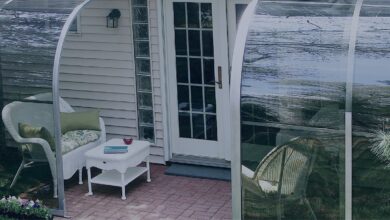
In this comprehensive guide, we will shed light on the sensitive but profoundly important topic of potential abuse at Solstice West Residential Treatment Center (RTC). With a focus on parents, mental health professionals, and educators, we aim to provide an exhaustive resource on recognizing, addressing, and preventing abuse within educational and therapeutic environments. Our objective is to equip you with the knowledge and tools necessary to protect the well-being of those under the care of institutions like Solstice West RTC.
Introduction
The safety and welfare of children and adolescents in residential treatment settings have become a growing concern for families across the globe. Solstice West RTC, founded in 2008, located in Utah, is an institution designed to provide long-term, comprehensive treatment for struggling young women.
However, despite the good intentions of such facilities, reports of mistreatment have emerged, instigating a critical examination of Solstice West’s practices and calling for a thorough discussion on how to safeguard the vulnerable individuals who seek help within its walls. This guide underscores the importance of addressing abuse in these environments and the collective effort required to maintain a standard of safety and care.
Understanding Solstice West RTC
Background and Mission
Solstice West RTC proclaims a mission to ‘heal, teach, and inspire’, emphasizing a holistic approach that integrates therapy with academics, adventure, and equine-assisted techniques. The RTC is designed to support young women in forming healthy relationships, rebuilding trust, and gaining tools to manage mental health challenges effectively.

Programs and Approaches
Solstice West employs multi-faceted therapeutic models, such as Dialectical Behavior Therapy (DBT), Cognitive Behavioral Therapy (CBT), Trauma-Focused Cognitive Behavioral Therapy (TF-CBT), and Equine Therapy. Their educational component includes a fully accredited on-site school, with a focus on tailored learning and individualized education plans.
Recognizing Potential Abuse
Signs and Red Flags
Abuse in any form can take different shapes, ranging from physical to emotional and even sexual. For parents and professionals, recognizing the signs of abuse is crucial. Signs can include unexplained injuries, changes in mood or behavior, fear of certain staff members or environments, and accounts that don’t seem to add up.
Impact on Individuals and Community
The effects of abuse within the context of a residential treatment center can be devastating and far-reaching. Individuals may struggle with trust, develop severe forms of PTSD, or may even engage in self-harm or suicidal behaviors as a result.
Addressing Abuse Allegations
Reporting Procedures
If any sign or suspicion of abuse arises, understanding the steps of reporting allegations is critical. In the case of Solstice West RTC, it’s essential to follow the established reporting channels. This can involve notifying the appropriate agency, contacting a legal representative, documenting evidence, and supporting the victim through the process.
Legal Implications and Rights
Upon discovering abuse, there may be a complex set of legal considerations. Victims and their families have rights, and it’s imperative to engage with expert legal counsel to understand the implications, seek justice, and ensure appropriate compensation.
Support Resources for Victims
Counseling and Therapy Options
Following an experience of abuse, accessing appropriate therapeutic resources becomes necessary. Support could come in the form of individual and family therapy, trauma-specific therapy, specialized care for mental health issues, and even therapeutic boarding schools that are known for their safe and supportive environments.
Support Groups and Advocacy Organizations
Joining a support group or seeking assistance from advocacy organizations can offer a platform for sharing experiences, gathering support, and participating in efforts to prevent future incidents. Organizations specializing in RTC advocacy can provide both moral support and practical guidance for individuals affected by Solstice West RTC.

Conclusion
Abuse within educational and therapeutic institutions is a harrowing reality that demands collective vigilance and proactive measures. We have examined warning signs, legal pathways, and resources available to address abuse within Solstice West RTC. However, the work does not end there. Our final call to action is one of commitment and engagement. It is through these collaborative actions that we can strive to protect the most vulnerable members of our society.



